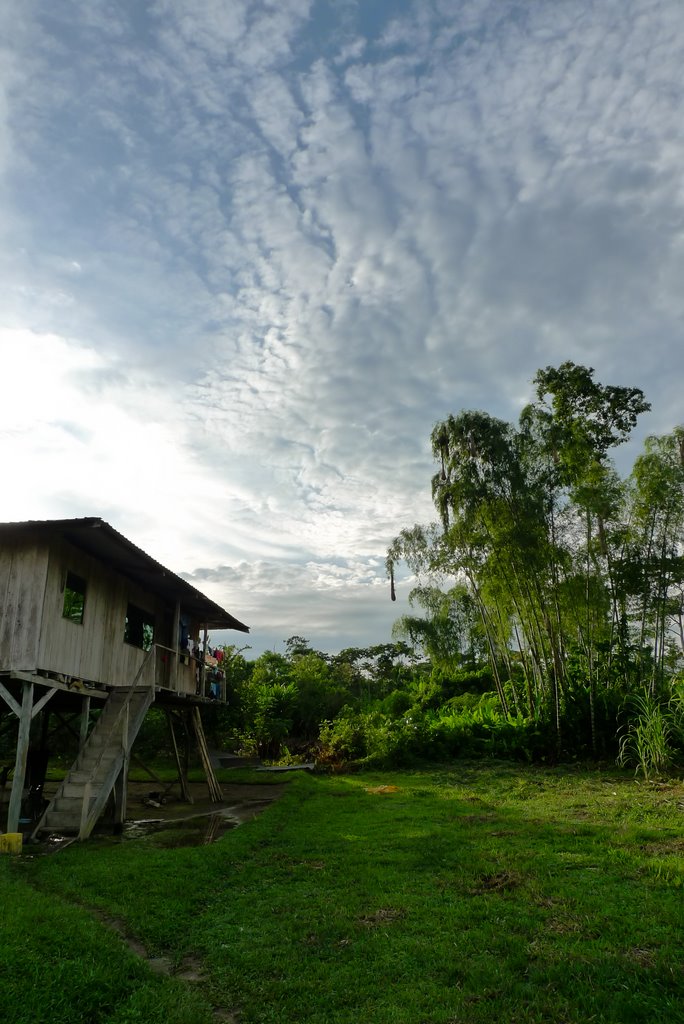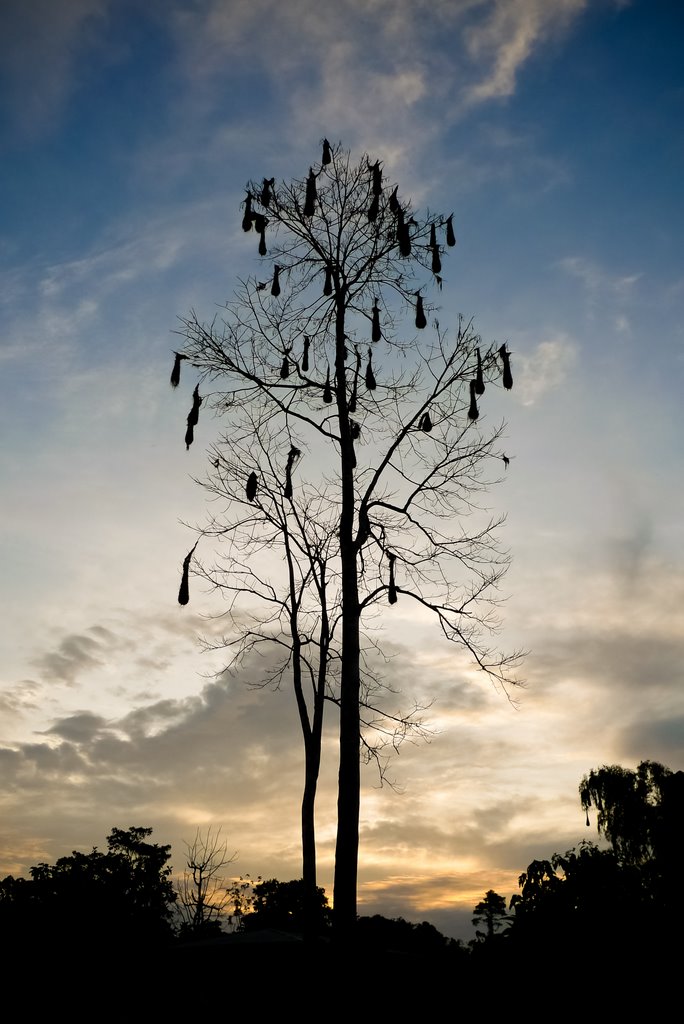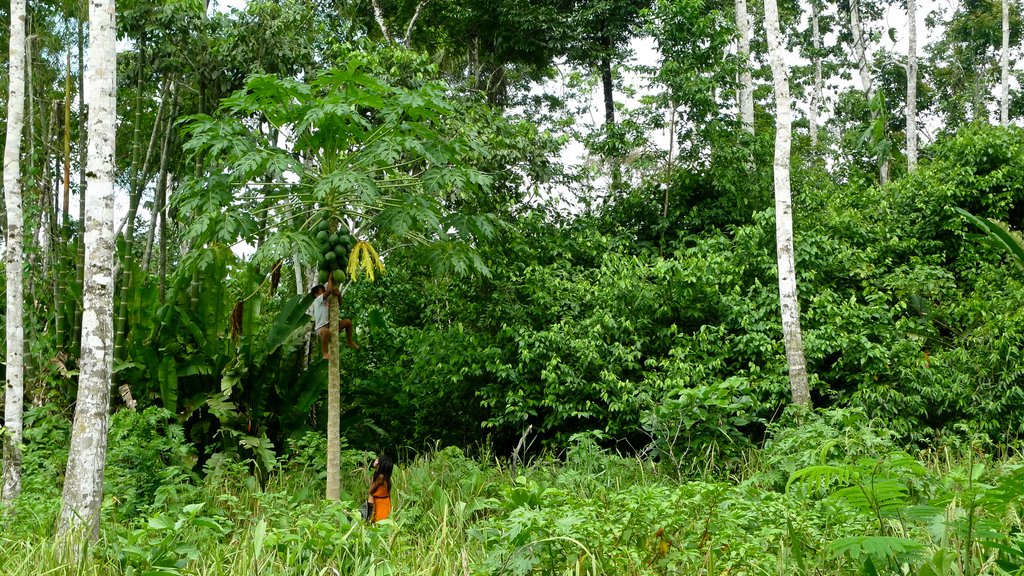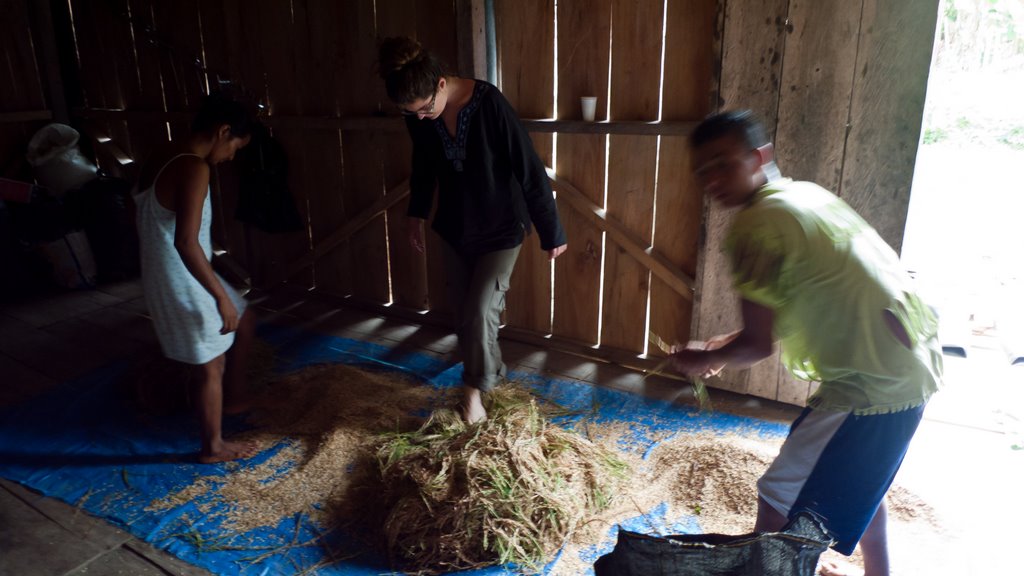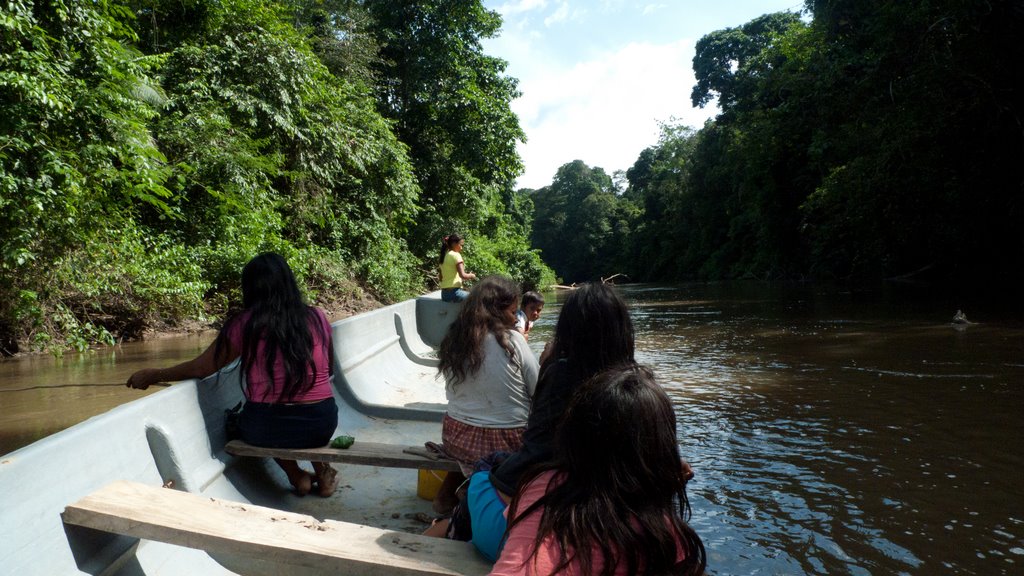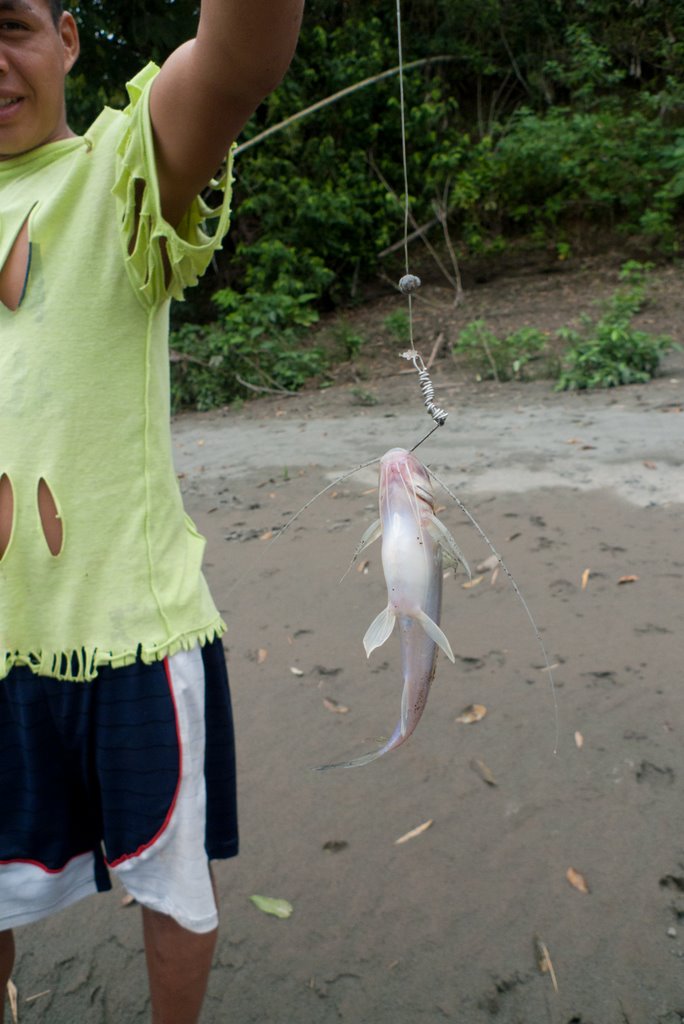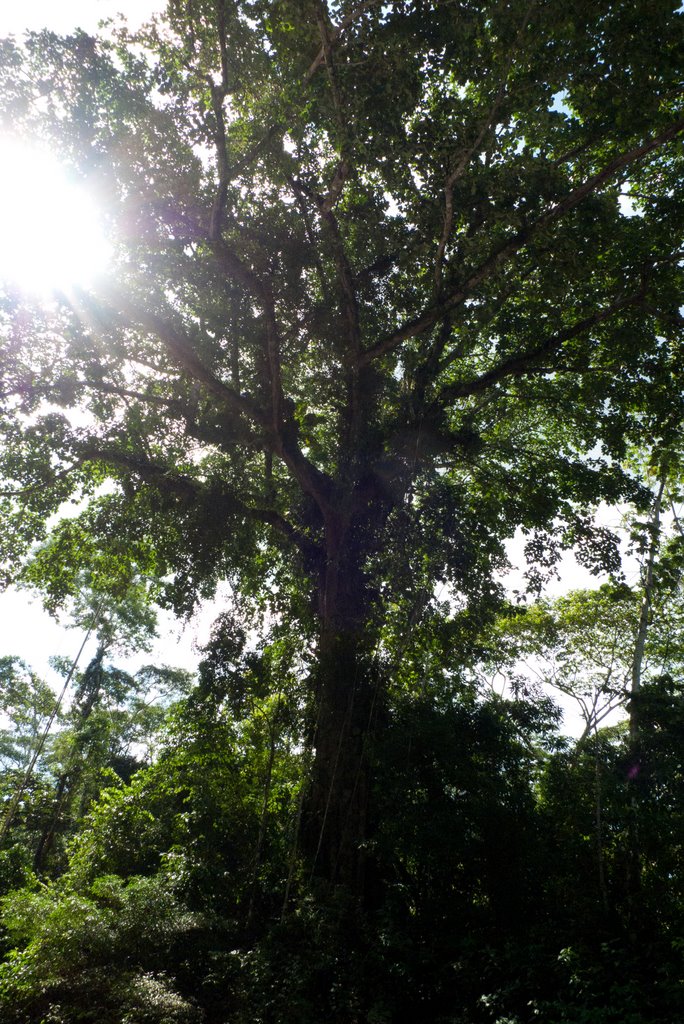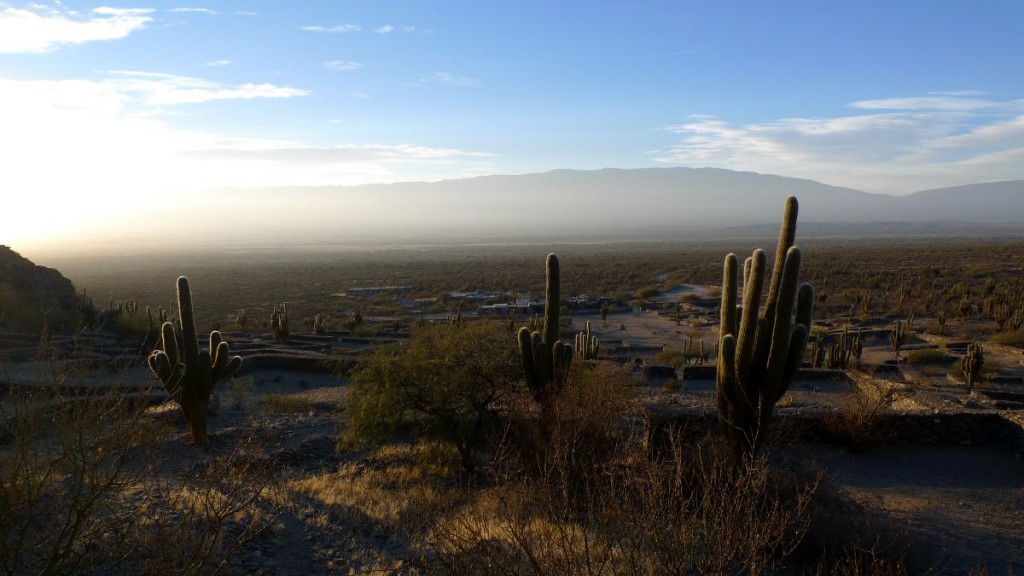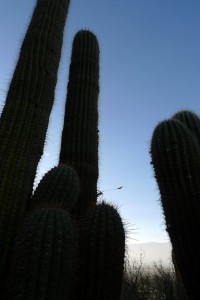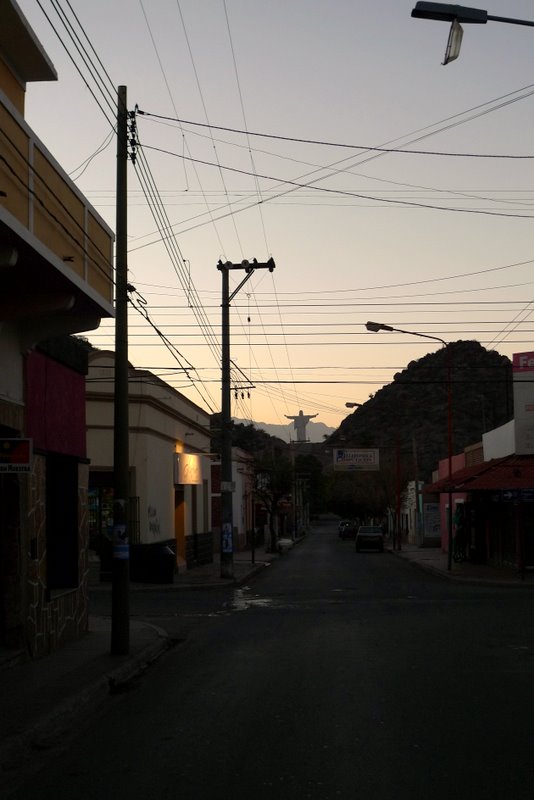In November 2009, Georgia and I stayed for eight days in the Secoya community of San Pablo, which is found in the east of Ecuador on the Rio Aguarico.
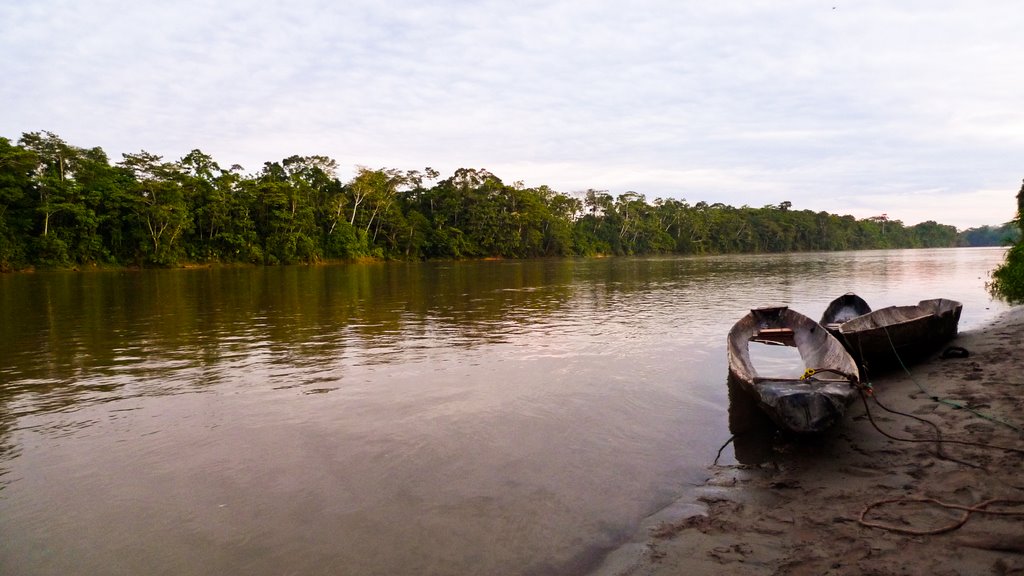
Staying with the Secoya was the single most authentic experience I had in seven months of traveling in South America. It was one of the very few times when I felt a genuine connection based on mutual respect and interest. We paid for our stay there; and we also contributed food for the family we stayed with; but this felt like a fair and easy exchange and didn’t detract from the experience at all. This was in stark contrast to so many other moments when I was traveling, where an opportunity to communicate and share experience with someone from another culture very often became overshadowed by commercial considerations. I understand that people are simply trying to get by, but after months of traveling, searching for real experience rather than packaged commercial tourism, it becomes wearying. The Secoya were a breath of fresh air simply because they were normal people, interested in sharing their home and their way of life with visitors.
While we were there, we stayed with the Payaguaje family. I took this photograph of the grandfather of the family, Delfin, preparing medicinal plants.

In order to say thanks, I am selling prints of this image, and donating 100% of the profits to Delfin’s family. The money will help fund the Secoya’s conservation foundation, which aims to protect their land from oil exploration and illegal logging.
The prints are 16″ x 24″ inches (the images are slightly smaller, because there is a bit of white space around them), on high quality photographic paper. I will be printing a limited edition run of ten signed copies.
I am asking for $250 for an unframed print, and $400 for a framed print (all prices are in AUD). The frames are simple black wood, with high quality acid-free matting. I can post unframed prints within Australia, included in the $250 cost; if you want me to send you a framed copy, I am happy to do so but I would like you to cover the additional cost. I can send prints framed or unframed internationally, however will need buyers to cover the cost of postage so that I can send the maximum amount to the Secoya.
How will I send the money to the Secoya?
I have some contacts at the University of Quito, who are the people that originally made it possible for us to stay with the Secoya. They have agreed to pass on the money. They have been working with the Secoya for many years, and can be trusted to give them the money.
I am hoping to be able to send the money by Paypal, or else in the bank account of someone I know who is travelling to Ecuador; however if neither of those plans work, there is always the money-laundering criminal syndicate known as Western Union, who will take hefty fees, but will reliably deliver the remnants.
I have sold two three of the ten prints so far, and I would like to send the money by October 1, 2011. This means I will be taking orders for prints until September 24. Please contact me to place an order.
Thanks a lot for reading; if you’d like to read the story of our time with the Secoya, please continue…
_____________________________________________________________________________________
It had taken us quite a while to organise coming to San Pablo. The idea was originally raised in June, when we met a couchsurfer in Cordoba in Argentina. Upon learning that we were interested in indigenous culture, he suggested that we get in contact with his friends, who were biologists at Quito University. They were conducting research projects with the Secoya and could possibly help us to arrange to go and stay with them. Five months, thousands of kilometers, and countless organisational emails later, it finally happened.
We caught an overnight bus from Quito to Lago Agrio, a greasy oil town in the Sucumbíos province of Ecuador. Lago Agrio is very close to the Colombian border, and serves as a base for smuggling coca, cocaine, and illegal timber. Because Ecuador uses US dollars as currency, Lago Agrio is an excellent base for laundering drug money. Coca products flow from Peru and Bolivia to Colombia through Lago Agrio, and the money they generate comes back to be laundered in the oil business. Apart from several prominent money changers on the main street, we didn’t see any obvious evidence of illicit activity – but the smell of dirty money was everywhere.
Arriving before 6 am, we stumbled into the only cafe open to try and get some breakfast. While eating our plaintains, we watched oil workers in blue overalls eating their breakfast of fried chicken and rice.
Our friends in Quito had arranged for us to be met in Lago Agrio by the son of the family we were to stay with. I had his mobile phone number, but due partly to technical (finding a working payphone) and partly to linguistic difficulties (two Spanish-as-second-language-speakers attempting to communicate on a static-y mobile phone call), this was quite hard to achieve. After a few hours, and a change of cafe, we finally succeeded. We followed him around to markets, buying up the supplies we would need. A sack of rice, some vegetables, some oil, and some gumboots. At a butcher’s stall in the market, a dead armadillo lay on its back, its innards removed. I asked the seller if I could take a photo, but got an unintelligible and unusually grumpy grunt in response, so decided against it. Eventually we were ready and got on the bus to San Pablo.
Three hours later we arrived at a rickety bridge crossing a minor tributary. There was nothing else around. We got off the bus and followed our Secoya friend to a waiting canoe. A short ride down the river, and our Secoya time had begun…
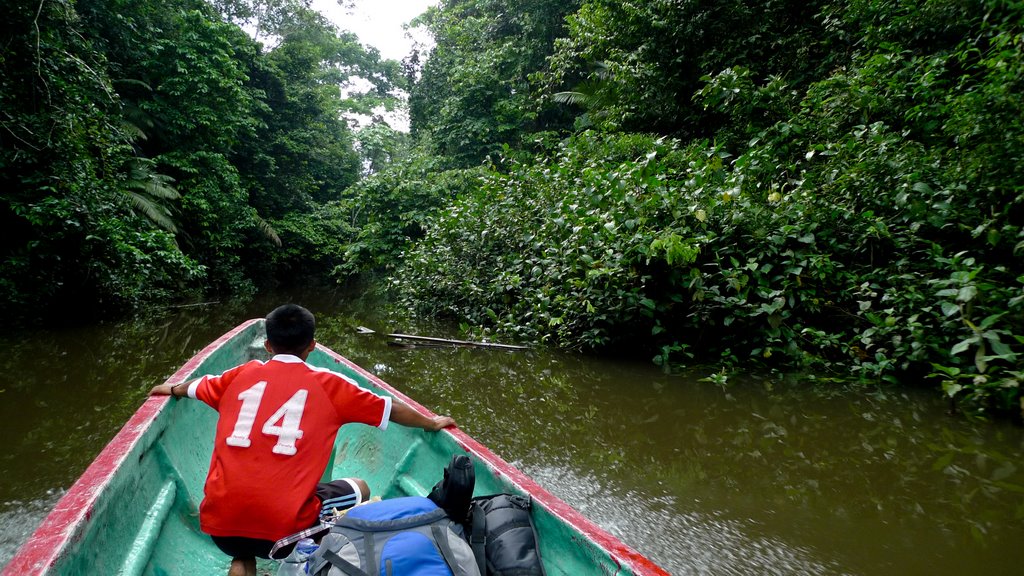
…Stay tuned for the next part of this story.
